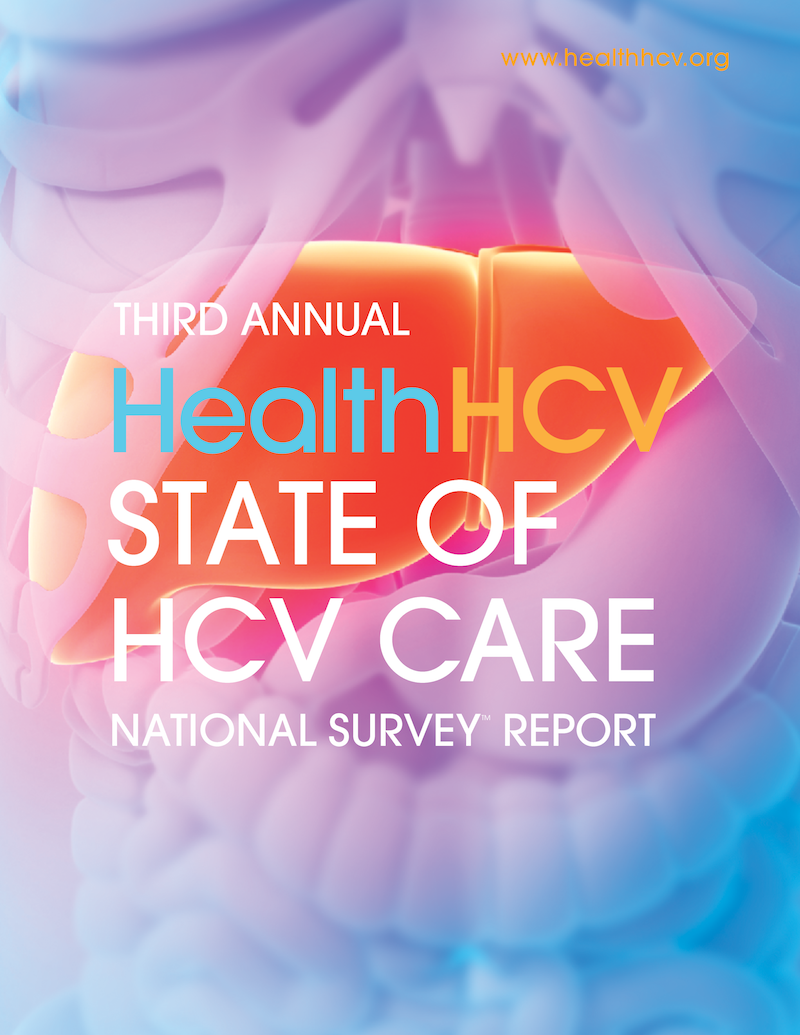HCV Workforce Shortage Demonstrates an Urgent Need to Expand HCV Treatment into Primary Care to Curb the Epidemic
The Third Annual HealthHCV State of HCV Care National SurveyTM Identifies Workforce Dynamics Impacting HCV Treatment Outcomes Washington, DC – Over one-third of current HCV treatment providers are reaching retirement age at the same time they are experiencing HCV caseload increases and planning to scale up treatment, according to the Third Annual HealthHCV State of HCV Care National SurveyTM report. The growing gap of HCV treaters is concerning as survey findings indicate a lack of onsite trained providers across practice settings as well as in key service areas and over half of HCV providers have been practicing for fewer than five years. In community-based settings across the country, primary care providers are at the forefront of the effort to expand HCV treatment access. HCV patients are three-times more likely to be treated by a primary care provider than a specialist, reflecting a key evolution in the HCV care and treatment landscape.   As National Hepatitis Awareness Month continues through May, HealthHCV released a comprehensive report of the Third Annual HealthHCV State of HCV Care National SurveyTM findings, which includes first-of-its-kind data on the state HCV care in HIV and primary care settings. The report highlights specific education, training, and financial resources that providers need in order to scale-up HCV services, remain responsive to national guidelines and recommendations, and meet the needs of a growing and diversifying HCV patient population. HealthHCV also launched its HCV Services and COVID-19 Provider Survey during Hepatitis Awareness Month, which will be fielded through June 15, 2020. Key findings from the 407 providers surveyed in the HealthHCV State of HCV Care National SurveyTM demonstrate notable gaps in the HCV prevention and treatment workforce, including: HCV Screening Practices - Only one quarter (27%) of providers are implementing universal HCV screening in accordance with the newest Centers for Disease Control and Prevention (CDC) and U.S. Preventive Services Taskforce (USPSTF) guidelines; the majority (73%) screen based on identified risk factors.
- Nearly half of providers (43%) requested education/training on the current HCV screening guidelines.
- One third (34%) of providers refer HCV patients offsite for RNA confirmatory testing.
- A majority of providers (44%) report their patients are likely to be lost during linkage to care rather than during other points along the HCV care continuum.
HCV Treatment Practices - Patients being treated onsite (versus referrals) are three-times more likely to be treated by a primary care provider than a specialist.
- About one quarter (24%) of providers report seeing re-infection among patients; primarily among people who inject drugs (PWID).
- The most significant provider-reported barriers to providing HCV screening, care and treatment services are: limited infrastructure for providing services, lack of trained providers onsite or in their service area, administrative costs, provider stigma, and treatment utilization policies impacting coverage by insurance.
- Over one-third (40%) reported being unable to treat a patient’s infection due to payer restrictions.
HCV Workforce - Over one third of HCV providers (34%) are reaching retirement age at the same time that nearly half of providers (43%) are experiencing HCV caseload increases.
- Over half of HCV providers (51%) have been practicing for fewer than five years.
- Most providers (64%) are partnering with community-based organizations that specialize in risk reduction and harm reduction services for PWID (e.g. needle/syringe exchange, methadone clinics) in response to growing patient population with co-occurring substance use disorder or opioid use disorder.
Education & Training Needs - Providers requested additional education and training on addressing re-infection among HCV patients, monitoring HCV patients not on treatment, appropriate treatment for HCV/HIV co-infected patients, determining when to initiate treatment for HCV, and discussing sexual health, liver health, and substance use with HCV patients.
“Since we have the ability to cure HCV through simplified, quality treatment, it is imperative that limited workforce capacity and insurance coverage are not barriers to HCV testing and treatment,” said HealthHCV Director Marissa Tonelli. “HealthHCV is addressing the workforce training and development needs in primary care settings to ensure more people with HCV have access to screening and curative therapy.” The HealthHCV State of HCV Care National Survey™ is fielded online annually via SurveyMonkey™. It is distributed through HealthHCV and its partner, Medscape Education, to hundreds of providers in all 50 states, the District of Columbia, Puerto Rico and major U.S. territories.
The Third Annual HealthHCV State of HCV Care National Survey™ report documents the key survey findings and their implications on the HCV provider workforce. View the report at www.HealthHCV.org and access existing HCV resources are available for consumers, providers and advocates on HealthHCV’s online resource center. For More Information:
To learn more about the survey, report, or HealthHCV education and training opportunities, please contact: Marissa Tonelli
Director of HealthHCV
Office: 202.507.4731
Email: marissa@HealthHCV.org
Downloaded from HealthHIV.org ### |